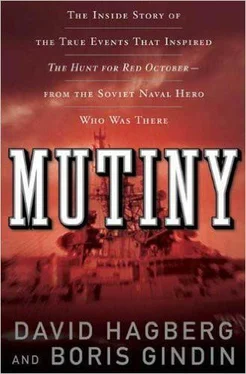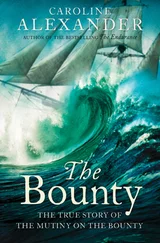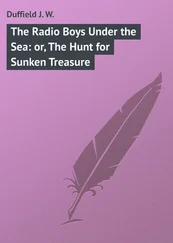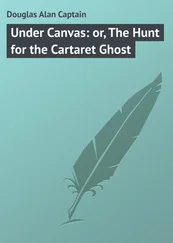The United States has allied with it the countries of NATO, among others. And the Soviet Union has as its partners the Warsaw Pact, mostly Eastern European satellite nations under the Soviet sphere of influence.
But for guys like Captain Potulniy and his officers, including Boris Gindin, the Cold War is more than just a philosophical issue. Out in the Med or the Atlantic the Cold War is a real thing, up close and personal.
It’s early April 1974; the Storozhevoy is on rotation in the mid-Atlantic. It’s stormy weather with high winds, low clouds scudding across the sky horizon to horizon, and monstrous seas. Gindin is in the mechanical spaces when Potulniy gets on the radio from the bridge.
“Boris, I need more speed,” the captain orders. There is a strain in his voice. “More RPMs, Boris.”
Boris follows the captain’s orders, naturally, and increases the RPMs on all four power plants: the two marching engines and the two boost engines. The Storozhevoy shivers, as if he’s a racehorse given the green light to stretch his legs, and takes off.
Twenty minutes later Potulniy is back on the comms: “Boris, more speed! Increase RPMs.”
Boris does this. Whatever is happening on the bridge must be very urgent, because the gas turbines are putting out just about as much power as they are capable of producing. The gauges are nearly redlined.
Five minutes later Potulniy is back. “I need more speed.”
“I cannot do that, Captain,” Boris radios back. “The engines will be damaged.”
“What do you mean?” Potulniy shouts. “Do as you’re told!”
Boris is in a tight spot. He is between a rock and a hard place. He either disobeys a direct order or damages his engines. He radios Potulniy. “Captain, may I speak to you in private?”
After a beat, the captain is back. “Come to the bridge.”
Topsides, Gindin sees that the chaotic seas are nothing short of monstrous. Close to their starboard beam is a German naval destroyer. So close that Gindin can actually see the officers on the bridge staring back at them. The German ship means to crowd the Storozhevoy, just to show that Germans won’t take any shit from Russians. This is what Potulniy has been faced with. He needs as much speed as possible in order to outmaneuver the Germans.
“If I increase RPMs, the engines may be damaged,” Boris explains.
Potulniy contemplates Boris’s warning for just an instant before he nods. There is a bond between the two officers. Potulniy trusts his engineering officer, and Boris will go to the ends of the earth for his captain.
“If you want me to proceed, I’ll need your orders in writing, sir,” Boris tells the captain.
Potulniy nods. “Just do what you can for me, Boris. It’s all I ask.”
“Yes, sir,” Boris says. The captain’s signature is not necessary after all. Boris rushes back down to the machinery spaces, where he increases the speed of the engines by a scant few RPMs. “I can do no more than this,” he radios the bridge.
“Thanks, Boris,” Potulniy radios. “You are a good guy.”
Later Boris learns that the encounter with the Germans was a very close call, which could have created an international incident, but because of Boris’s steady and capable hand on the engines Potulniy had enough speed to outmaneuver the Germans and a disaster was narrowly averted. From that day on Poltulniy will ask only that Boris do his best and will not push his engineer any further.
The bond of trust between them has become like a hardened steel chain.
From time to time the Storozhevoy encounters American avionosez, aircraft carriers conducting their training missions. The Soviet navy is tasked with the job of watching such missions just to see how the other guys do things. Should it ever come to a shooting war, each side needs to know how the other operates.
“We Russian ships and submarines were far from our homes and our bases, right in the middle of the enemy,” Gindin says. “We had to be ready at a moment’s notice to strike back and defend the Rodina. We had no allies on our side in the middle of the ocean. We were on our own against the enemy, and every moment of every day we knew it.”
That was in the middle of the Atlantic, but tensions much closer to home, in the Mediterranean, were just as high, sometimes higher. It’s early afternoon, admiral’s hour, and Boris is off duty, on the deck smoking a cigarette, when the captain’s voice booms throughout the ship: “Battle stations! Man your battle stations!”
Before he can toss his cigarette overboard, before he can even move, Boris spots the periscope of a submarine just a couple hundred meters off their port side, practically within spitting distance. It’s not a Russian boat.
Such a thing is impossible. The Storozhevoy’s sonar equipment is state-of-the-art, for the Soviet navy, and should have easily detected the presence of an enemy submarine long before he could become the serious threat he is now. After all, the Storozhevoy is an ASW platform. He was designed to hunt, find, and kill submarines.
Potulniy is hopping mad, and he believes that turnabout is fair play, even though warships carrying full weapons loads operating practically on top of each other create an inherently dangerous situation. One error of judgment, one slip by a helmsman, one maneuver misjudged by the enemy ship, can have dire consequences. Wars have been started in just this way. Russians have a long naval history and even longer memories, but the captain will not be denied the chance to prove that his ship and his crew are up to the task they are charged with.
Boris races belowdecks to his engines, as the Storozhevoy turns sharply to port while accelerating like a scalded gazelle, his active sonar systems banging away loudly enough that half of Europe can practically hear the racket.
The submarine submerges and heads away at his flank speed, never fast enough or crafty enough to escape the Storozhevoy’s electronic net, all the way back to Italian waters, where he is safe.
But Potulniy knows, as does his crew, that the enemy submarine would have been theirs had a state of war existed. The fact that the sub got so close to them without detection in the first place is something not discussed with the captain or among the crew. From the moment the Storozhevoy was called to action he performed magnificently.
Nobody has made a choice, the white backgammon piece or the black. It’s as if all the air has left the compartment. No one dares to breathe, let alone make a move one way or the other. Sablin stands there looking at them, a very odd, fixed expression on his face, in his eyes. He is a completely different person now from the one who hands out the materials for the political education classes that the officers have to teach every second Monday. At those times he is stern but friendly. He actually likes his job as zampolit, and everyone is sure that he believes with all his heart the Communist Party messages that he preaches.
Sablin comes aboard with boxes of magazines and articles put out by the Political Military Publishing companies. The routine is for him to go over the magazines page-by-page looking for the themes of each three-hour political lecture. One time it might be Lenin’s ideas on collectivism applied to the Cold War. Another time might be the navy’s role in defending the Rodina or the political part every man in the military has to play.
Sablin hands out the material that each officer uses to prepare extensive notes for the three-hour class he has to teach before giving the notes to Sablin for approval. Everyone hates this job, the officers as much as the sailors. But it’s part of life in the Soviet navy, and during the lectures no one really pays any attention, but neither does anyone put up a fuss or crack jokes. This is deadly serious business.
Читать дальше












